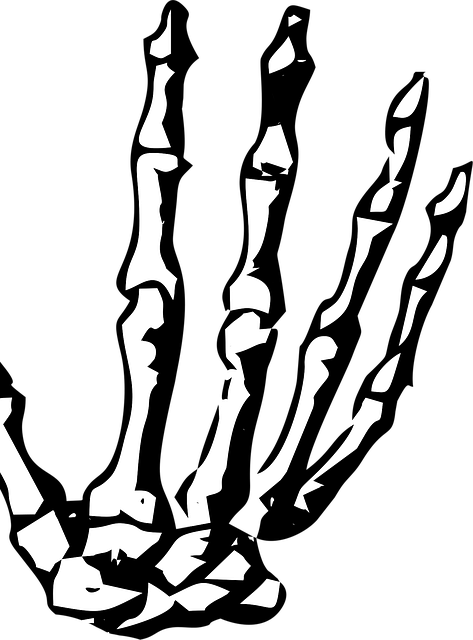CT scans, leveraging X-rays and advanced computers, offer detailed internal body imaging with the help of contrast agents like iodine. These agents enhance visibility, allowing doctors to accurately diagnose and monitor conditions in organs such as the liver, kidneys, lungs, and blood vessels. CT contrast for X-ray is crucial for detecting subtle issues, including small tumors and blockages, leading to improved patient outcomes and early intervention. Safety considerations are paramount due to radiation exposure and potential side effects, with healthcare professionals balancing benefits against risks based on patient history.
“Unveiling hidden anomalies within the body has never been more precise than with CT contrast for X-ray imaging. This advanced technique leverages contrast agents to enhance medical visualizations, enabling doctors to detect tumors, identify blockages, and assess abnormalities with unprecedented clarity.
This comprehensive guide explores the science behind CT scans and their role in modern diagnostics. We delve into the function of contrast agents, examining how they transform simple X-rays into powerful tools for life-saving discoveries. Prepare to unravel the intricacies of this groundbreaking technology.”
Understanding CT Scans and Their Role in Medical Imaging
CT scans, or computed tomography scans, are a powerful tool in medical imaging that use X-rays and computer technology to create detailed cross-sectional images of the inside of the body. This non-invasive procedure involves rapidly rotating an X-ray source and sensitive detectors around the patient, capturing multiple angles and slices of the anatomy. What sets CT scans apart is their ability to use contrast agents, such as iodine-based substances, to enhance visibility. CT contrast for X-ray plays a pivotal role in detecting subtle anomalies that might be difficult to identify through regular imaging.
By injecting these contrast materials into the patient’s bloodstream, doctors can highlight specific structures and organs, making them stand out against the background tissue. This technique is especially valuable in visualizing tumors, blockages, or abnormalities in organs like the liver, kidneys, lungs, and blood vessels. The contrasting appearance allows radiologists to accurately measure size, shape, and density, aiding in diagnosis, treatment planning, and monitoring patient progress over time.
The Function of Contrast Agents in CT Scans
Contrast agents play a pivotal role in enhancing the visibility of structures within the body during computed tomography (CT) scans. When introduced into the bloodstream, these substances interact with X-rays to create distinct patterns that highlight specific tissues or abnormalities. This process, known as contrast enhancement, significantly improves spatial resolution and allows radiologists to detect tumors, blockages, and other pathologies more accurately.
In CT imaging, different types of contrast agents are used depending on the intended application. For example, ionic contrast agents like iodine are commonly employed to visualize blood vessels, while non-ionic agents such as gadolinium chelates are preferred for enhancing soft tissue structures. By carefully selecting and administering the appropriate contrast agent, healthcare professionals can optimize the detection capabilities of CT scans, ultimately leading to more accurate diagnoses and effective treatment planning.
Enhancing Tumor Detection, Blockage Identification, and Abnormality Assessment
The utilization of CT contrast agents significantly enhances various medical imaging procedures, including X-ray scans. When it comes to tumor detection, contrast can highlight abnormal tissue structures by providing a sharp distinction between healthy and cancerous cells. This is particularly beneficial in identifying small tumors or those with similar density to surrounding tissues, which are often challenging to discern without contrast. By improving visualization, radiologists can make more accurate diagnoses at an early stage, leading to better patient outcomes.
Moreover, CT contrast for X-ray plays a crucial role in detecting blockages within the body’s vessels and organs. Contrasting agents can pinpoint obstructions, such as blood clots or narrowings caused by plaque buildup, making it easier for healthcare professionals to assess the severity of the blockage. This early detection allows for timely interventions, preventing potential life-threatening complications. Similarly, in the assessment of abnormalities, contrast media can help differentiate benign from malignant changes, aiding in the comprehensive evaluation of various conditions, including liver diseases, kidney disorders, and cardiac issues.
Safety and Considerations When Using CT Contrast
When using CT contrast, safety is of paramount importance. Unlike some other imaging techniques, CT scans with contrast involve exposure to radiation and injection of foreign substances into the body. Therefore, healthcare professionals must carefully consider the benefits versus risks for each patient. These considerations include assessing the patient’s medical history, allergy risks, and potential side effects such as kidney strain from the contrast dye.
For individuals with certain health conditions like kidney disease or allergies, the use of CT contrast may need to be approached with extra caution. Healthcare providers will often weigh these factors before deciding whether a CT scan with contrast is necessary and appropriate for an individual patient. Regular monitoring and following up with patients post-scan are crucial to ensure safe administration of CT contrast for X-ray imaging.
CT scans have become invaluable tools in medical imaging due to their ability to provide detailed cross-sectional images of the body. The integration of contrast agents enhances this capability significantly, allowing healthcare professionals to more accurately detect tumors, identify blockages, and assess abnormalities. By improving visibility and distinction between normal tissue and pathologies, CT contrast for X-ray plays a crucial role in early diagnosis and effective treatment planning. Safety measures must be observed to ensure the benefits of this technology are realized while minimizing potential risks.
